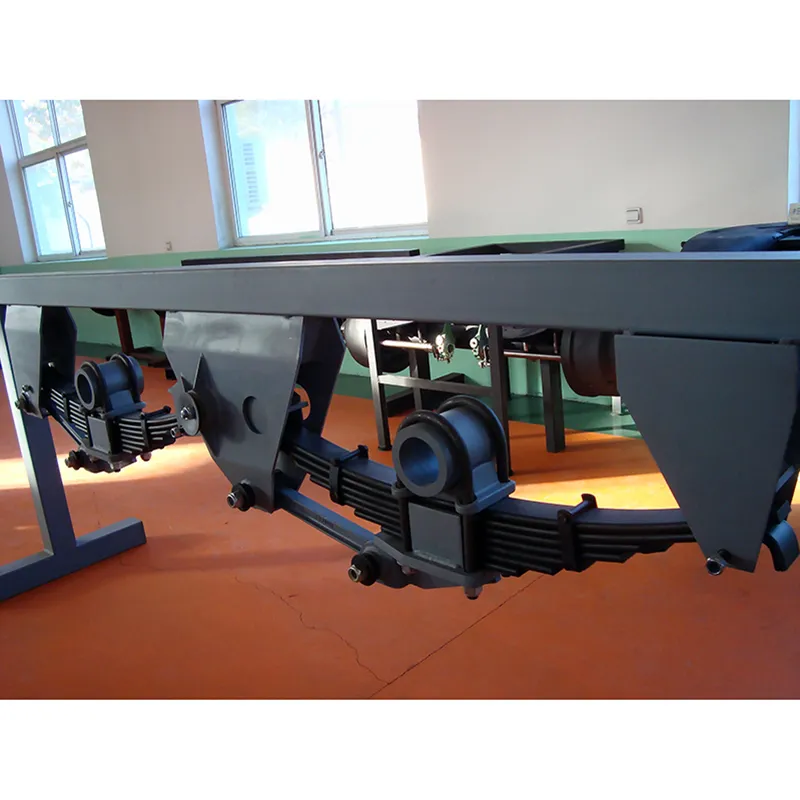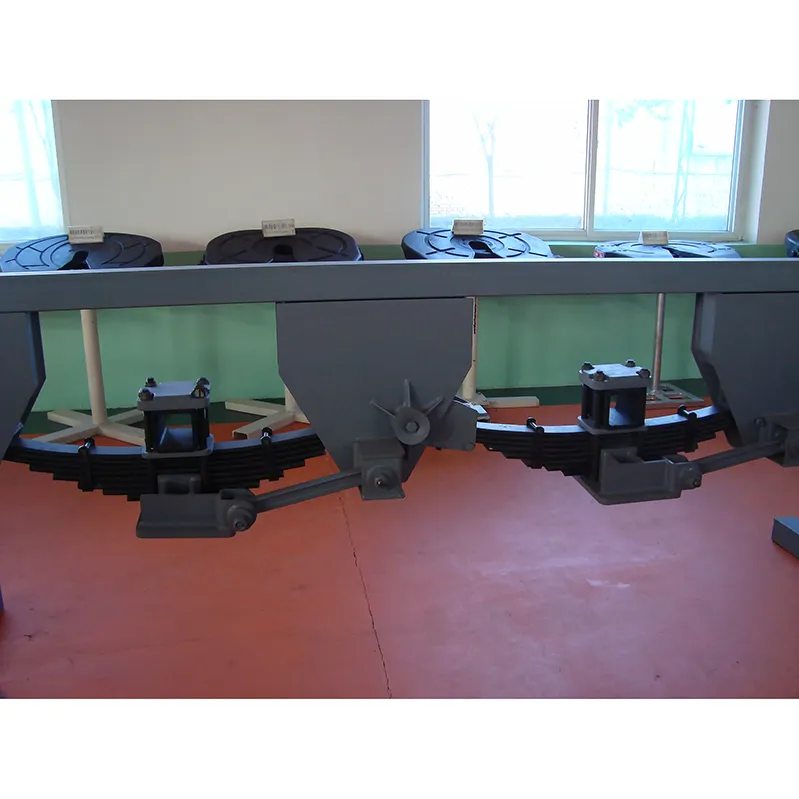Oct . 10, 2025 11:25 Back to list
South African Henred Suspension: OEM Quality, In Stock?
Field notes on heavy-trailer suspensions in Southern Africa
If you operate tippers, flatbeds or tankers across rough South African corridors, you’ve probably bumped into the South African Henred Suspension more than once. Built in Shijiazhuang City, Hebei Province, China, it’s a mechanical (leaf) tandem built to soak up abuse on mine roads, N-routes, and those sneaky corrugated district tracks that look easy until they’re not. To be honest, what keeps fleets loyal is simple: predictable handling, easy spares, and pricing that doesn’t make finance sweat.

Where it fits and why fleets pick it
Application-wise, think: steel and timber haulage, construction aggregates, agricultural bulk, container111s at port, even fuel if fleet policy allows. A South African Henred Suspension tends to ride a bit firmer than air, yes, but many customers say it’s “honest” — fewer surprises under load, fewer line-stoppage faults, and easier roadside fixes. In fact, parts commonality with classic Henred-style layouts is a huge plus up-country.
Quick specs (field-proven ranges)
| Axle capacity (per axle) | ≈ 13T–16T (real-world use may vary by duty cycle) |
| Track width | ≈ 1,850–2,000 mm |
| Hanger center distance | ≈ 1,300–1,550 mm |
| Leaf spring steel | High-strength alloy (e.g., Q345B/ASTM A572 Grade 50) |
| Bushing options | Natural rubber / PU, oil-resistant grades available |
| Finish | Zinc-rich primer + powder topcoat (salt spray targets ≈ 480–720 h) |
| Expected service life | ≈ 300,000–500,000 km with routine maintenance |

How it’s built: materials, methods, testing
The backbone of a South African Henred Suspension is HSLA steel cut via CNC, then robotically MIG-welded. Critical brackets are stress-relieved; leaf packs are heat-treated and shot-peened for fatigue resistance. Surface prep uses phosphate or zirconium passivation before powder coating. Bushings are press-fitted to tight tolerances; U-bolts (often 22–24 mm) get controlled torque with witness marking.
Testing typically includes: weld macro-etch checks, hardness mapping on springs, bench fatigue (≈ 1×106 load cycles on a servo rig), and corrosion validation to ISO 9227/ASTM B117 salt spray targets. Brake interface geometry respects ECE R13 principles, and production quality is usually aligned with ISO 9001; some lines follow IATF 16949 methodologies.

Industry trends (and a candid note)
Air suspensions are creeping into long-haul lanes for tyre life and cargo protection. However, in quarry, timber, and cross-border mixed roads, the South African Henred Suspension keeps winning on simplicity. Polyurethane bush upgrades are trending; so are heavier hanger gussets and sealed pivot kits. Surprisingly, some fleets are standardizing on one ride height across mixed trailers to simplify spares.
Customization options
Common tweaks include axle spread, hanger height, spring leaf count, track width, 10-stud 335 mm PCD hubs, and extra-thick wear plates. For corrosive routes (salt or phosphate), go higher-spec coatings and sealed bushings. If you’re running high-CG tankers, consider stiffer spring rates and cross-bracing.

Vendor snapshot (what fleets compare)
| Vendor | Certs | Lead time | Customization | Price (≈) | Warranty |
|---|---|---|---|---|---|
| Land Fifth Wheel (Hebei) | ISO 9001; process aligned to IATF | 4–8 weeks | High (track, hangers, bush) | Mid | 12–18 months |
| Local SA aftermarket brand | ISO 9001 (varies) | Stock/2–4 weeks | Medium | Mid–High | 12 months |
| Generic import aggregator | Varies | 6–10 weeks | Low–Medium | Low–Mid | 6–12 months |
Two quick case notes
• KZN timber hauler: swapped to heavier hangers and PU bushes on a South African Henred Suspension; uptime improved ≈ 8% over six months, mostly fewer pivot-service stops.
• Namibia bulk fleet: standardized spring packs across mixed trailers; inventory SKUs dropped by ~30%, and drivers reported steadier tracking on B-road detours.
Final take
If your routes are unforgiving and your workshops practical, a South African Henred Suspension remains a safe bet. It’s not fancy, but it’s faithful — and that counts on pay-by-the-kilometre contracts.
Authoritative citations
- ISO 9227: Corrosion tests in artificial atmospheres — Salt spray tests.
- ASTM B117: Standard Practice for Operating Salt Spray Apparatus.
- ECE Regulation No. 13: Uniform provisions concerning the approval of braking for vehicles of categories M, N and O.
- ISO 9001:2015 Quality management systems — Requirements; IATF 16949:2016 Automotive quality management.
- ASTM A572 / Q345B specifications for HSLA structural steels used in suspension components.
-
Fontaine No Slack II Adjustment: Enhancing Trailer Suspension Reliability & Safety
NewsNov.25,2025
-
Fontaine PDF Explained: Industrial Documentation, Specs & Innovation
NewsNov.24,2025
-
Heavy Haul Fifth Wheel – Essential Couplers for Oversized Transport
NewsNov.24,2025
-
Comprehensive Guide to Parts of the Fifth Wheel | Essential Components & Innovations
NewsNov.23,2025
-
Comprehensive Guide to 5th Wheel Parts: Key Components, Vendors & Future Trends
NewsNov.23,2025
-
Comprehensive Guide to Fifth Wheel Grease: Lubrication for Safety and Efficiency
NewsNov.22,2025
